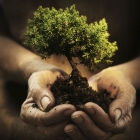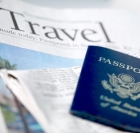-
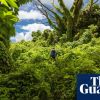 +3 +1
+3 +1The Fijian island being strangled by vines
Vanua Levu is being overrun by invasive vines – and the increasing number of natural disasters, brought on by climate change, is only making things worse
-
 +16 +1
+16 +1The Toxic History of Color
For all of human history, our species have used both natural and synthetic dyes—but have we taken our obsession with color to an extreme?
-
 +19 +1
+19 +1Researchers reveal secret of aye-ayes’ long middle finger
Video shows captive Madagascan primates using elongated finger to pick nose and eat the mucus
-
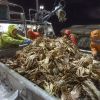 +7 +1
+7 +1Expert identifies what caused a massive die-off of Alaska’s snow crabs
Last week, there was mass confusion as to why Alaskan snow crabs have disappeared.
-
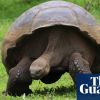 +12 +1
+12 +1Give legal rights to animals, trees and rivers, say experts
Report for Law Society says framework is essential for future interactions with the environment and biotechnology
-
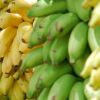 +13 +1
+13 +1Banana Genomes Hint at Hidden Species We Urgently Need to Find
The history of the banana is more complicated than you might have ever imagined (if you ever thought about it at all).
-
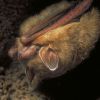 +14 +1
+14 +1A deadly fungus is driving these bats near extinction, government says
The exotic fungus was first discovered about 15 years ago in an upstate New York cave and has since spread across more than half the bat’s range.
-
 +19 +1
+19 +1Bird flu has killed 700 wild black vultures, says Georgia sanctuary
Exclusion zone set up around Noah’s Ark sanctuary in US amid outbreak of highly pathogenic H5N1 strain
-
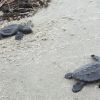 +17 +1
+17 +1The world's smallest sea turtle nests in Louisiana for the first time in 75 years
Kemp's ridley sea turtles have hatched in Louisiana's wilds, officials say, in a victory for barrier island restoration. The tiny turtle is also believed to be the world's most endangered.
-
 +14 +1
+14 +1Pollution: 'Forever chemicals' in rainwater exceed safe levels
From Antarctica to Tibet, long-lasting chemicals in rainwater are well above US safety guidelines.
-
 +4 +1
+4 +1Bison back in the UK: the inside story
They’ve been absent in the UK wild for thousands of years, but now a special project has welcomed these “woolly bulldozers” home.
-
 +3 +1
+3 +1There are 40% more tigers in the world than previously estimated
The number of tigers in the wild has gone up dramatically since 2015 — largely because of improvements in monitoring them, but the species remains endangered.
-
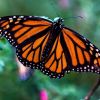 +18 +1
+18 +1Which endangered species should we save? Humans face tough choices about what lives — and what dies
Given the option of saving the iconic monarch butterfly or a giant slug, what would you choose? As more species are pushed to the brink of extinction, humans will have to decide the winners and losers of the animal kingdom.
-
 +23 +1
+23 +1TikTok ‘frog army’ stunt could have grave consequences, experts warn
Scientists alarmed at claims of releasing 10m frogs and 100m ladybugs to rack up viewers as relocating species can have ‘extremely negative consequences’
-
 +22 +1
+22 +1After 40 years of extinction, rhinos return to Mozambique
Over four decades after they became extinct locally, rhinos are roaming again the wilds of Mozambique, which is bringing the endangered species from South Africa in efforts to breathe new life into its parks and boost local tourism.
-
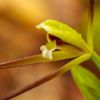 +15 +1
+15 +1Community Scientists Rediscover Orchid Last Observed in Vermont 120 Years Ago
In the over three decades that Bob Popp has been traipsing through the Vermont woods as the state’s botanist, he had never encountered a small whorled pogonia within the state. He had seen the yellowish-green orchid on excursions to other states, but never in Vermont, where the flower had been considered locally extinct since 1902. Despite its vast range within the U.S. from Missouri and Michigan up through Maine, the species has been considered threatened by federal wildlife officials since 1982.
-
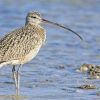 +16 +1
+16 +1Over 500 animal species haven't been seen in 50 years but they're still not officially extinct yet
Some could be lost forever, while others could live in areas difficult to reach
-
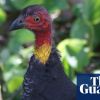 +9 +1
+9 +1‘Canaries in the coalmine’: loss of birds signals changing planet
Billions of birds are disappearing because of humanity’s impact on Earth, global review finds
-
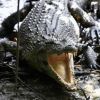 +13 +1
+13 +1Over 21% of reptile species at risk of extinction
At least one in five reptile species are threatened with extinction, including more than half of turtles and crocodiles, according to the first major global assessment of the world's so-called cold-blooded creatures.
-
 +3 +1
+3 +1'Not on our watch': The young family living in the middle of nowhere to bring our animals back from the brink
Meet the young couple living in one of the most-remote areas in Australia, all in the name of helping to bring our endangered animals back from the brink of extinction.
Submit a link
Start a discussion
















